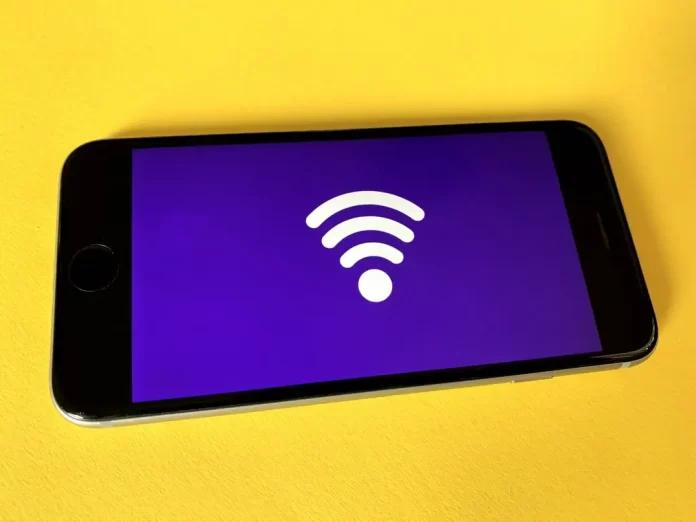Many users have already heard about the new Wi-Fi 7 technology which will soon appear on the market. However, most people still don’t fully understand why Wi-Fi 7 is needed and what new technology it has to offer, as well as how fast this type of Wi-Fi will be.
How fast Wi-Fi 7 will be and why it’s needed
With the advent of the internet, the world has changed dramatically. Today people constantly have almost unlimited access to a wide variety of data and information. In addition to this, the internet has allowed people to be closer than they have ever been. With access to the network, you can communicate in real-time with people who may be thousands of miles away.
Technology is constantly evolving and some 20 years ago the Internet was quite expensive in order to use it users were forced to lay a wire to their computer and buy modems or pay for access to very slow Internet on their cell phones, but today everything is different. Internet access has become much cheaper and easier. You can buy different packages even with unlimited data that allow you to access the Internet directly from your smartphone, and there are many technologies for wireless access to the World Wide Web.
Today we’re going to talk about Wi-Fi networks. This technology allows users on their smartphones or laptops to connect to special routers and access the Internet. Quite convenient and reliable technology today is found in almost every home, cafe, and even in most different public places. However, this technology also has its own development.
Over time, new versions of Wi-Fi technology were released, which helped to improve the speed, stability of the connection, and the number of devices. Very soon, Wi-Fi 7 technology will be on the market. It should bring quite a few changes and make network access even easier and more reliable.
Many users are still not fully aware of the benefits of this technology and what it can offer them.
What is Wi-Fi 7 technology
First off you need to understand what Wi-Fi 7 is and why it’s being developed in the first place. The fact is that since the release of WLAN, there have been continuous improvements to the WLAN and different kinds of things have been added to the technology. To make it easier to allocate the most basic versions, which were introduced new features and various breakthrough functions conditionally techno-technology Wai-Fi-Fi was divided into generations. So soon the time will come for the 7th generation of Wi-Fi
Wi-Fi 7 promises to be much better than its predecessor, Wi-Fi 6. This generation will combine up to three data bands, use ultra-wide data channels and also have the ability to combine multiple data channels together for even more bandwidth. This enables wireless networks to become even more reliable and faster than a wired connection.
Among the most important differences of the Wi-Fi 7 specification are the much higher bandwidth, the ability to connect more users, and the reduced latency in response. All of this makes Wi-Fi Wi-Fi 7 a much more advanced specification than Wi-Fi 6.
What are the specific technical specifications of Wi-Fi 7 compared to Wi-Fi 6
When it comes to comparing the two generations of Wi-Fi technology, it would be better to present a clear table with the main technical specifications for comparison.
| Specs | Wi-Fi 6 | Wi-Fi 7 |
| Maximum speed | up to 10 Gbps | up to 30 Gbps |
| Security standard | WP3 | WP4 |
| QAM modulation | 1024QAM | 4096QAM |
| Maximum connected devices | up to 8 | up to 16 |
| Access Point | 1 | Multiple |
| Frequency | 2.4GHz, 5GHz | 2.4GHz, 5GHz, 6GHz |
| Single-channel width | 160 MHz | 320 MHz |
| Network standard | IEEE 802.11 ax | IEEE 802.11 ax |
As you can see from the comparison of the two specs, the Wi-Fi 7 will be much more powerful and faster than its predecessor. For example, data transfer speeds will almost triple, up to 30 GB per second compared to 10 GB per second.
In addition, a great innovation is that now the data stream can be transmitted to 16 devices simultaneously. Previously, this capability was only available for 8 connected devices at the same time. This means that this protocol can serve quite a large number of devices without any additional hardware, which can be very useful if you want to connect smart home devices to it, or if you want to use Wi-Fi as public for example in your organization or office.
Important changes have also been made to security, the new WP4 security protocols will give you even more security when using your router.
Overall, Wi-Fi 7 will give you quite a few new features and it’s a great advancement in wireless networking. It’s currently scheduled for release in 2024. Soon this technology could change the world of wireless connectivity.




